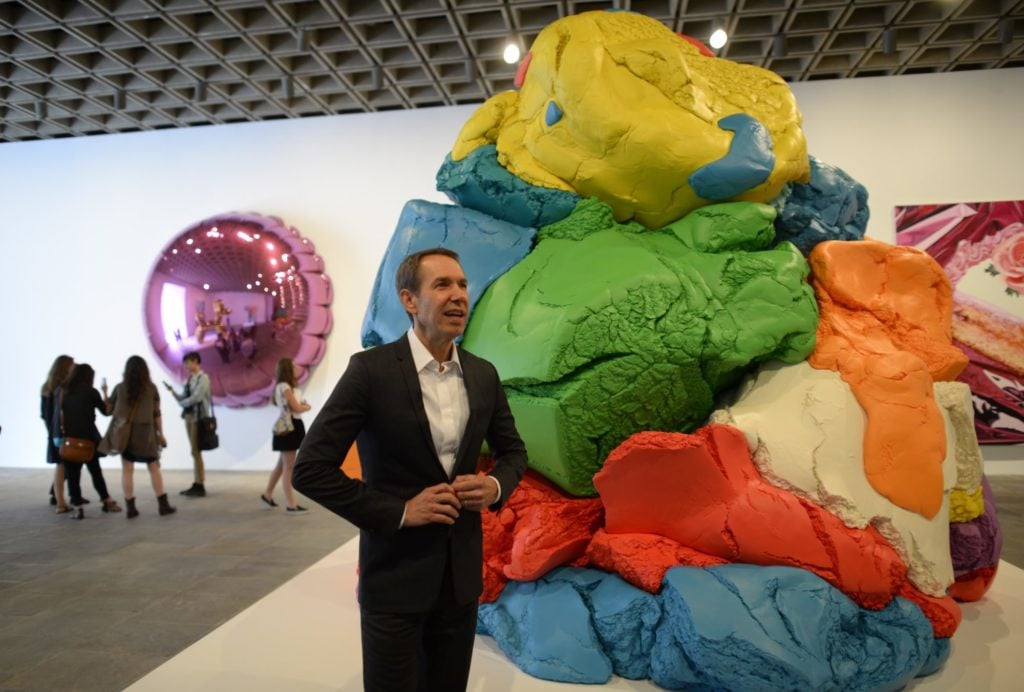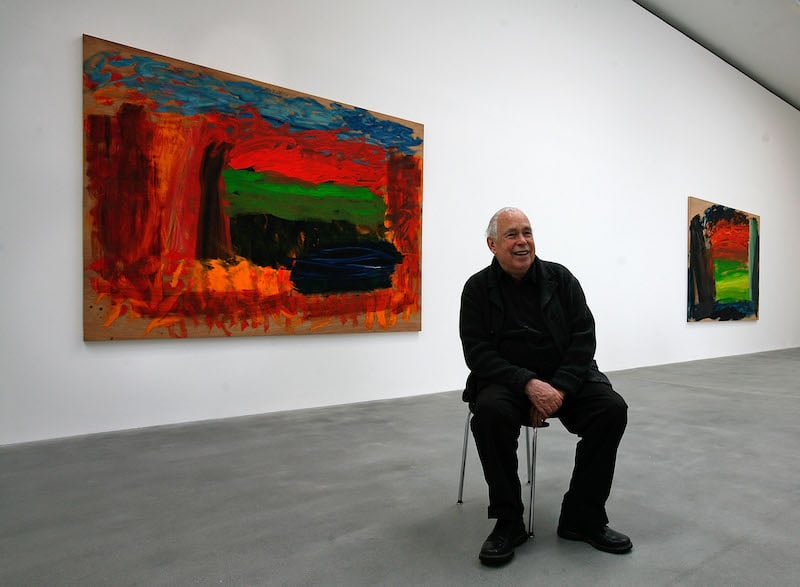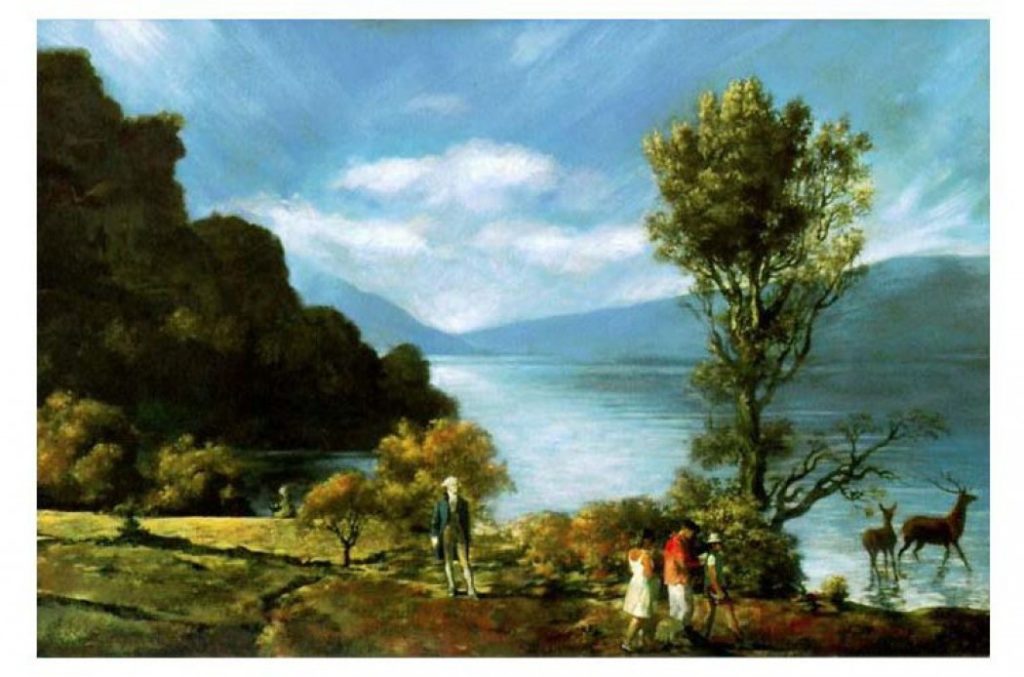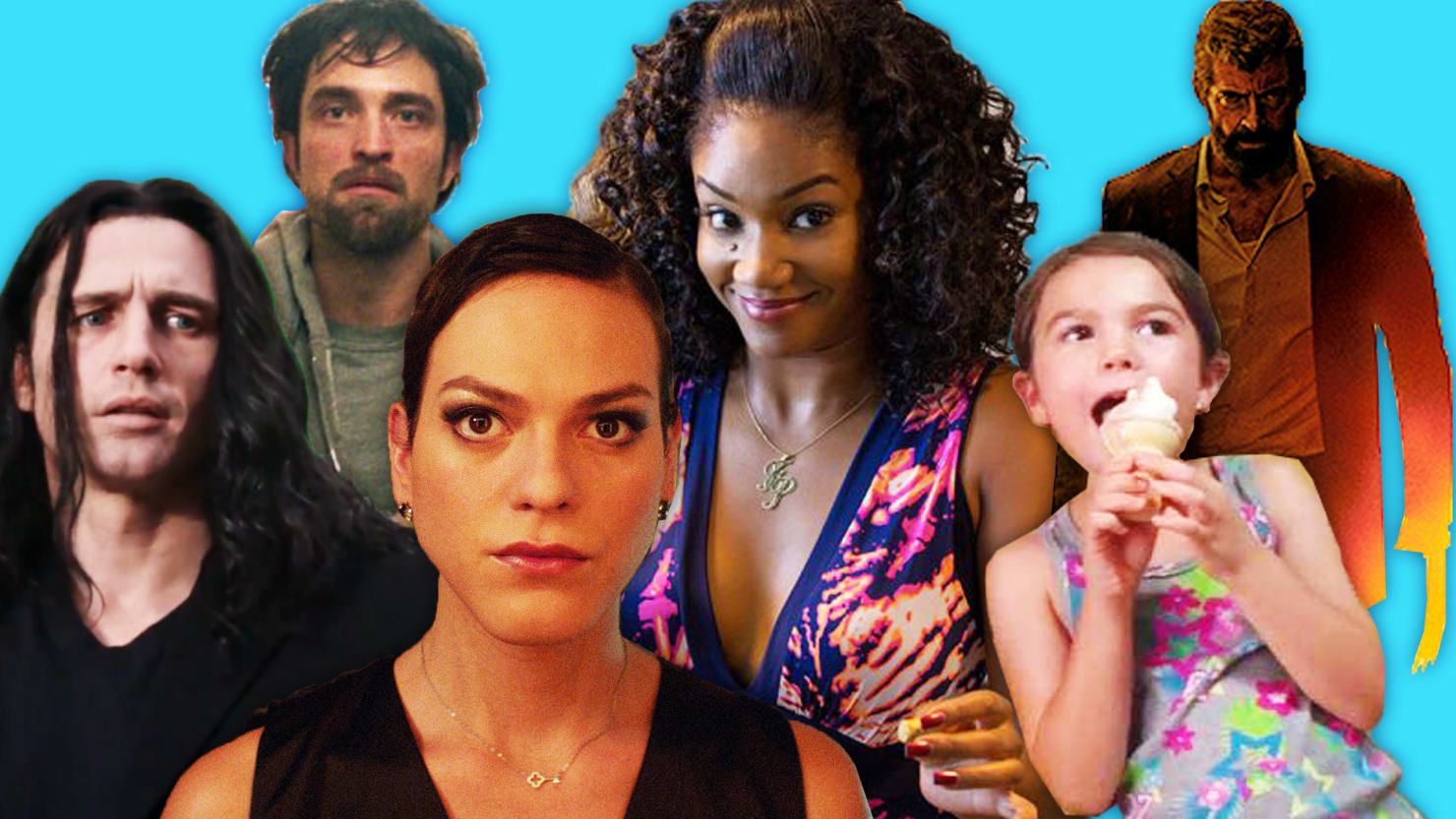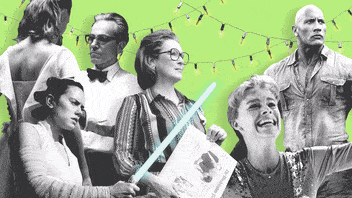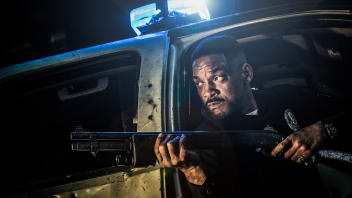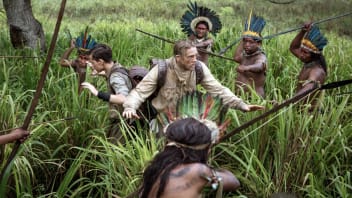Readers, it’s been a rough year. It’s felt like five. Remember
Fyre Festival? That happened
this year. Such is the Trump Effect, where weeks feel like months and any concept of time is lost, as though we’re all mushes wandering about a heavily oxygenated Atlantic City casino.
And Hollywood, bastion of romanticism and glamour, is in the throes of a long-overdue reckoning when it comes to matters of sexual harassment and assault—one that began with the unmasking of
movie monster Harvey Weinstein and has ensnared countless others since. Any form of entertainment,
whether it be music or movies, that helped drown out the madness for a couple of hours felt like manna from heaven.
What a year at the movies it was, too. It began in earnest with
Jordan Peele’s deliriously entertaining horror-satire
Get Out and closed with Daniel Day-Lewis’ swan song
Phantom Thread. In between there were too many good films to mention, and when compiling this Top 20 list I managed to leave out
quite a few worthy of commendation, including the race-relations comedy
The Big Sick; Taylor Sheridan’s murder-mystery
Wind River; the cannibal-drama
Raw; Bong Joon-ho’s wildly eccentric fantasy-actioner
Okja; and Olivier Assayas’ ghost story
Personal Shopper, anchored by the brilliant Kristen Stewart.
So without further ado, here are the top 20 films of 2017.
20. ‘The Disaster Artist’
There’s really no reason why this labor of love, about the making of the most ridiculous cinematic labor of love ever—
Tommy Wiseau’s The Room—should be this affecting. And yet it is. Sure, there are plenty of laughs to be had at this delusional Hollywood vampire’s expense, but director/star James Franco manages to find the beating heart beneath it all. Pursue your dreams, however foolish or impossible they may seem.
19. ‘Good Time’
The latest from the talented Safdie brothers (
Heaven Knows What) is like an arthouse version of
Crank, as our disturbed hero,
played by Robert Pattinson, races against the clock in order to save his mentally handicapped brother. Along the way, he negotiates increasingly absurd obstacles but your interest never wanes thanks to the breakneck pace, pulsing electronic score, and Pattinson’s jittery magnetism.
18. ‘Girls Trip’
This raucous comedy about four lifelong besties (Regina Hall, Tiffany Haddish, Jada Pinkett Smith, Queen Latifah) who go down to New Orleans’ Essence Festival to let loose was this year’s
Bridesmaids, and a blockbuster smash that slapped down the industry myth that black women can’t open movies. The film also served as a coronation of sorts
for star Tiffany Haddishwho, like Melissa McCarthy before her, deserves awards recognition for her scene-stealing turn.
17. ‘Wonder Woman’
Filmmaker Patti Jenkins and star Gal Gadot have
achieved the near-impossible here, not only managing to salvage a cherished superhero trapped in a godawful cinematic universe, but bucking societal sexism to create a superheroine for the ages—one that little girls across the world can cherish and admire. Some movies transcend the medium. This was one of them.
16. ‘Mudbound’
It’s been exciting to watch the
cinematic maturation of filmmaker Dee Rees, who burst onto the scene with her Sundance hit
Pariah and followed it up with the gripping HBO film
Bessie. Here, she’s filled her largest canvas yet, telling a tale of two families—one black, one white—on a flood-drenched farm in rural, racist Mississippi just after World War II. Rees’ epic, which takes you from the battlefields of WWII to the backwoods of America, is first and foremost a triumph of perspective, mining the depths of each and every character in creating an indelible commentary on race and what it really means to be a patriot.
15. ‘The Lost City of Z’
James Gray is an incredibly talented filmmaker who always seems to get screwed over, from star Joaquin Phoenix torpedoing his press tour for the riveting
Two Lovers to Harvey Weinstein burying
The Immigrant. This adventure-drama about Percy Fawcett, a British explorer in the early 1900s in search of a lost city deep in the heart of the Amazon, grossed only $8.6 million at the domestic box office. Too bad, because it’s an astonishing work, and one of the few adventure films that
weighs the cost of what’s left behind.
14. ‘Dunkirk’
I’m still waiting for Christopher Nolan to helm
the mother of all Bond films, but in the meantime, this World War II saga about the Dunkirk evacuation will do. Nobody handles scale like Nolan, and this sprawling wartime drama, shot in eye-catching 65 mm, provides the most gut-wrenching sensory experience of war since the opening minutes of
Saving Private Ryan.
13. ‘Logan’
In a year of standout superhero films, from
Wonder Woman to
Thor: Ragnarok,
this one proved tops. Anchored by a grizzled Hugh Jackman, it plays like a western/road movie, with an aging Logan/Wolverine squaring off against an ICE-esque deportation force. But more so than the action or allegory, it’s the film’s consideration of fatherly bonds—between Patrick Stewart’s Charles Xavier and Logan, and Logan and X-23—that make it profound.
12. ‘The Shape of Water’
Few directors manage to
harness the transportive power of cinema like Mexican filmmaker Guillermo del Toro, whose exquisite creations—from his period sets to his delicate creatures—continue to inspire awe. This 1960s-set fairy tale, about a mute cleaning lady who falls head over heels for a mysterious sea creature, is made with such tenderness and love that it’s impossible to resist. It is, at times, extraordinary, as during a musical number later in the film, and Sally Hawkins proves the perfect vessel for del Toro, an actress who inspires more goodwill than just about any other.
11. ‘Brawl in Cell Block 99’
Without question one of the biggest surprises of the year. Who knew Vince Vaughn had it in him to anchor a skull-crushingly violent B-movie about an ex-boxer brawling his way through the prison system in order to free his pregnant wife (Jennifer Carpenter) from the mob? Vaughn, witty and imposing, is an absolute revelation here. With the exception of a midnight screening of Get Out, it’s the most fun I’ve had at the movies this year.
10. ‘BPM (Beats Per Minute)’
I’m a bit angry with myself for not catching this one before compiling my
list of the year’s most overlooked movies, because this urgent French drama certainly would have made the cut. Directed with grace by Robin Campillo and featuring a breakout turn from star Nahuel Perez Biscayart, it chronicles the efforts of the AIDS awareness group ACT UP in early ‘90s Paris, vividly capturing their unbridled passion in the pursuit of social justice. Remember that “some movies transcend the medium” bit? This is it.
9. ‘A Fantastic Woman’
If there were any justice in Hollywood, Daniela Vega
would make history as the first transgender person to be nominated for an acting Oscar and only the third transgender person to ever be nominated, after the composers Anohni and Angela Morley. She is absolutely electrifying as Marina, a woman whose life is turned upside down following the death of her lover, in Chilean filmmaker Sebastian Lelio’s latest. As she navigates the treacherous terrain, teeming with closed-mindedness, Vega truly lives up to the film’s title.
8. ‘A Ghost Story’
Yes, this film co-stars Casey Affleck. And yes, some will
find that a problem. Thankfully, he spends most of the film covered in a white sheet—a man who, after perishing in a car accident, awakens in the morgue as a ghost and proceeds to haunt his Texas home, as well as his heartbroken wife (Rooney Mara). What sounds terribly silly on paper proves to be a bold, poetic meditation on love, loss, and mankind’s pursuit of serenity. And Rooney Mara is absolute dynamite. You’ll never look at a chocolate cream pie the same way again.
7. ‘Get Out’
I had the distinct pleasure of catching the very first public screening of Get Out—a surprise midnighter at the Sundance Film Festival—and what a rollicking good time it was. Not since the first Scream has a horror movie incited such loud cheers, as its hero turns the tables and begins knocking off the baddies, one by one. But Jordan Peele’s film is so much more than that, too. It’s a bristling commentary on liberal racism and the pressure to conform to whiteness that, in 2017, couldn’t be timelier.
6. ‘Columbus’
I’ve said it before, and I’ll say it again: this small, stunningly rendered film should be up for a whole bunch of Oscars. It marks the feature directorial debut of video essayist Kogonada, and stands as a monument to the architectural beauty of the Midwest, as two lost souls—a morose forty-something (
John Cho) whose architect-father is in a coma, and a gifted 19-year-old (Haley Lu Richardson) putting her life on hold to care for her recovering-addict mother—navigate the Saarinen-designed structures of Columbus, Indiana, as well as their pasts. A lovely little gem.
5. ‘Call Me by Your Name’
A transcendent exploration of first lust, first love and first heartbreak. That it’s set in the ‘80s, and concerns gay affair between a 17-year-old and a slightly older man only raises the dramatic stakes, amplifying those feelings of crippling self-doubt and romantic ecstasy that are part and parcel with one’s sexual awakening. Luca Guadagnino guides the story with grace, Timothee Chalamet and Armie Hammer sizzle as the two lovers, and the always-impressive Michael Stuhlbarg delivers
the most heart-stirring movie monologue of the year.
4. ‘The Florida Project’
Sean Baker, the visionary filmmaker behind the iPhone-helmed
Tangerine, is
one of the most exciting young directors around. His latest, shot in lush 35 mm, chronicles life in a run-down extended-stay motel on the outskirts of Disney World as seen through the eyes of Moonee (Brooklynn Prince), a mischief-making 6-year-old who lives with her unstable and unemployed mother (Bria Vinaite). It’s a stunning, heartbreaking meditation on how the other half lives, propelled by Prince’s winning charm and Vinaite’s volatility that, with its mixture of grittiness and magic realism, recalls
Beasts of the Southern Wild.
3. ‘Faces Places’
With all due respect to Timothee Chalamet and Armie Hammer, the most compelling movie duo of the year is none other than J.R. and Agnes Varda, the 33-year-old French artist and 88-year-old nouvelle vague filmmaker. Watching them traverse the French countryside in a truck, transforming the villagers into works of art—plastering large-format photos of their faces on their surroundings—is pure joy. A stunning tribute to those that make the world turn.
2. ‘Lady Bird’
It’s an interesting thing, when the gifted pupil surpasses the master—a recurring theme of samurai cinema and those inspired by it, from
Star Warsto
Batman Begins. With her spectacular feature directorial debut, writer/director Greta Gerwig has done just that, leapfrogging her mentor/partner Noah Baumbach. Centering on a precocious high schooler (Saoirse Ronan) stumbling through her senior year, Gerwig’s film captures the messy spiral of emotions that lead hormonal teenagers down paths scary and unknown. From awkward first kiss to prom night, the familiar teen-narrative beats are handled with such realness and care that they’ll transport you back to your own not-so-halcyon high school days, when there was everything before us and nothing before us. It will also make you feel
incredibly grateful for your mother.
1. ‘Phantom Thread’
No film this year has stuck with me like
Phantom Thread. It’s haunting. The
There Will Be Blood duo of filmmaker Paul Thomas Anderson, perhaps the greatest American filmmaker right now, and actor Daniel Day-Lewis, perhaps the greatest living actor, have reunited for this fine-tailored tale of a 1950s London dressmaker and his muse (the Luxembourgish Vicky Krieps, divine). There isn’t a wasted frame in this, Anderson’s meditation on the push-and-pull that exists between obsessions professional and personal, and the childlike neediness of the artist. The performances are also first-rate, including Lesley Manville as Day Lewis’ icy sister, and if Jonny Greenwood’s score is not justly rewarded, there will be outrage. Quite the
swan song for Day-Lewis, if the retirement rumors are true.


